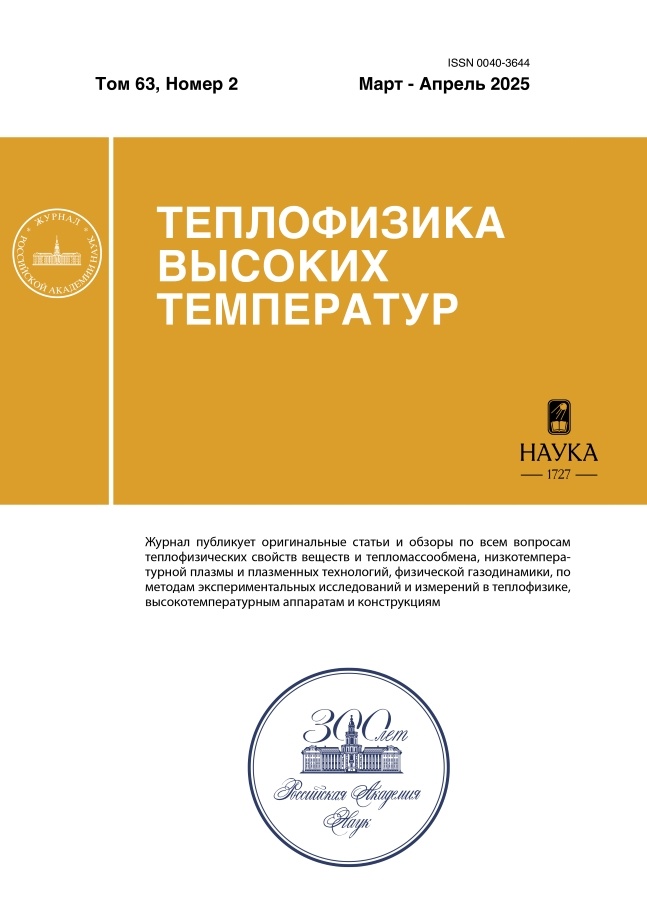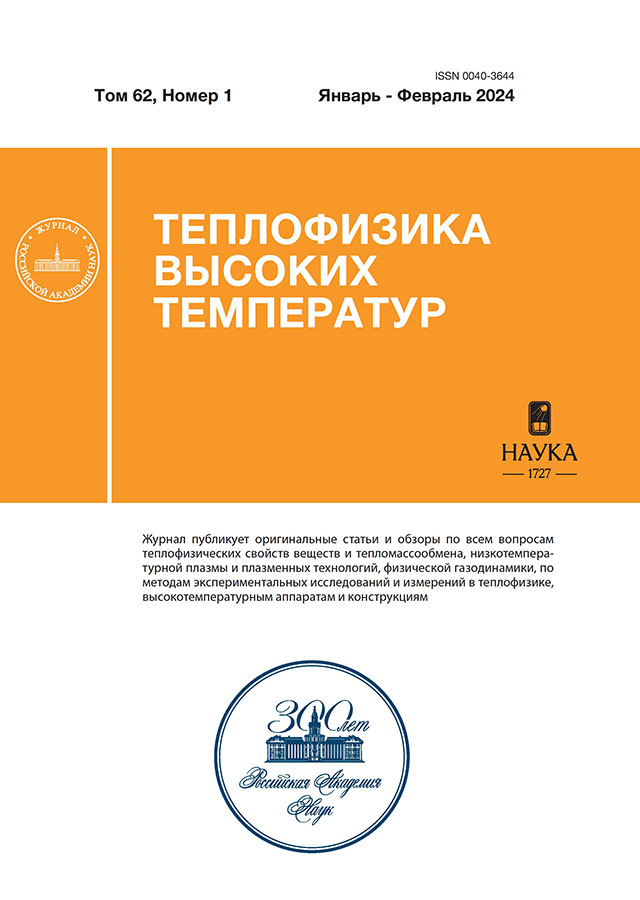Влияние электронных комплексов на ток коронного разряда в криогенном гелии
- Авторы: Bonifaci N.1, Li Z.1, Denat A.1, Атражев В.М.2
-
Учреждения:
- Laboratoire G2Elab CNRS & Joseph Fourier University
- Институт высоких температур РАН
- Выпуск: Том 62, № 1 (2024)
- Страницы: 12-17
- Раздел: Исследования плазмы
- URL: https://ruspoj.com/0040-3644/article/view/653026
- DOI: https://doi.org/10.31857/S0040364424010025
- ID: 653026
Цитировать
Полный текст
Аннотация
Сверхкритический газообразный гелий при температуре 7 и 11 К возбуждался коронным разрядом при отрицательных высоких напряжениях. Разряд поддерживался электронами, созданными у катода и движущимися к аноду через плотный газ. Проведены измерения тока коронного разряда при фиксированной температуре газа с изменением его давления. При низкой плотности газа ток разряда был бо́льшим. В этом режиме электроны свободны и обладают высокой подвижностью. По мере увеличения давления ток коронного разряда резко уменьшался. При высокой плотности газа измерен слабый ток 100 нА в результате низкой подвижности электронов из-за их локализации. Такое резкое уменьшение тока разряда наблюдалось при температурах 7 и 10 К и давлениях 0.2–0.4 МПа. Были измерены и проанализированы вольт-амперные характеристики разряда. Показано, что в этих условиях подвижность электронов уменьшается на три порядка. Переход от разряда со свободными электронами в состояние с локализованными электронами происходит в сверхкритическом газе в узком диапазоне давлений и объясняется квантово-механической природой электронов.
Полный текст
Об авторах
N. Bonifaci
Laboratoire G2Elab CNRS & Joseph Fourier University
Email: atrazhev@yandex.ru
Франция, Гренобль
Z.-L. Li
Laboratoire G2Elab CNRS & Joseph Fourier University
Email: atrazhev@yandex.ru
Франция, Гренобль
A. Denat
Laboratoire G2Elab CNRS & Joseph Fourier University
Email: atrazhev@yandex.ru
Франция, Гренобль
В. М. Атражев
Институт высоких температур РАН
Автор, ответственный за переписку.
Email: atrazhev@yandex.ru
Россия, Москва
Список литературы
- Храпак А.Г., Якубов И.Т. Электроны в плотных газах и плазме. М.: Наука, 1981. 282 с.
- Атражев В.М., Якубов И.Т. Электроны в плотных газах и жидкостях // ТВТ. 1980. Т. 18. № 6. С. 1292.
- Levine J., Sanders T.M. Anomalous Electron Mobility and Complex Negative Ion Formation in Low-temperature Helium Vapor // Phys. Rev. Lett. 1962. V. 8. № 4. P. 159.
- Levine J., Sanders T.M. Mobility of Electrons in Low-temperature Helium Gas // Phys. Rev. 1967. V. 154. № 1. P. 138.
- Harrison H.R., Sander L.M., Springett B.E. Electron Mobility and Localization in Dense 4He Gas // J. Phys. B. 1973. V. 6. № 4. P. 908.
- Sigmond R.S. The Unipolar Corona Space Charge Flow Problem // J. Electrostatics. 1986. V. 18. P. 249.
- Goldman M., Goldman A., Sigmond R.S. The Corona Discharge, Its Properties and Specific Uses // Pure and Applied Chemistry. 1985. V. 57. № 9. P. 1353.
- Coelho R., Debeau J. Properties of the Tip-plane Configuration // J. Phys. D. 1971. V. 4. P. 1266.
- Sigmond R.S. Simple Approximate Treatment of Unipolar Space Charge Dominated Coronas: The Warburg Law and the Saturation Current // J. Appl. Phys. 1982. V. 53. P. 891.
- Bonifaci N., Denat A. Negative Corona Discharge in Supercritical Helium // Conf. Records of the 12th Int. Conf. on Conduction and Breakdown in Diel. Liquids. Rome, July 15–19, 1996. P. 37.
- Li Z., Bonifaci N., Denat A., Atrazhev V.M. Negative Corona Discharge in Liquid Helium // IEEE Trans. Dielectr. Electr. Insul. 2006. V. 13. № 3. P. 624.
- Li Z., Bonifaci N., Denat A., Atrazhev V.M., Atrazhev V.V. Ionization and Charge Transport Phenomena in Liquid Helium Induced by Corona Discharge // J. Electrostatics. 2008. V. 66. № 5–6. P. 263.
- Borghesani A.F. Accurate Electron Drift Mobility Measurements in Moderately Dense Helium Gas at Several Temperatures // Atoms. 2021. № 9. P. 52.
- NIST. http://webbook.nist.gov/chemistry/
- Jahnke J., Silver M., Hermandes J.P. Mobility of Excess Electrons and O–2 Formation in Dense Fluid Helium // Phys. Rev. B. 1975. V. 12. № 8. P. 3420.
- Fermi E. Sopra lo spostamento per pressione delle rigne elevate delle rigne elevate delle serie specttrali // Nuovo Cim. 1934. V. 11. № 2. P. 157.
- Hernandez J.P. Self-trapped States of an Electron in a Structurally Disorder Systems // Phys. Rev. A. 1973. V. 7. № 5. P. 1755.
- Храпак А.Г., Якубов И.Т. К теории пузырькового состояния электрона в плотных газах // ТВТ. 1973. Т. 11. № 5. С. 1115.
- Лифшиц И.М. Теория флуктуационных уровней в неупорядоченных системах // ЖЭТФ. 1968. Т. 53. № 2. С. 743.
- Atrazhev V.M. Delocalization of Electrons in Dense Helium Gas by External Electric Field // J. Phys. D: Appl. Phys. 1984. V. 17. № 5. P. 889.
Дополнительные файлы


















